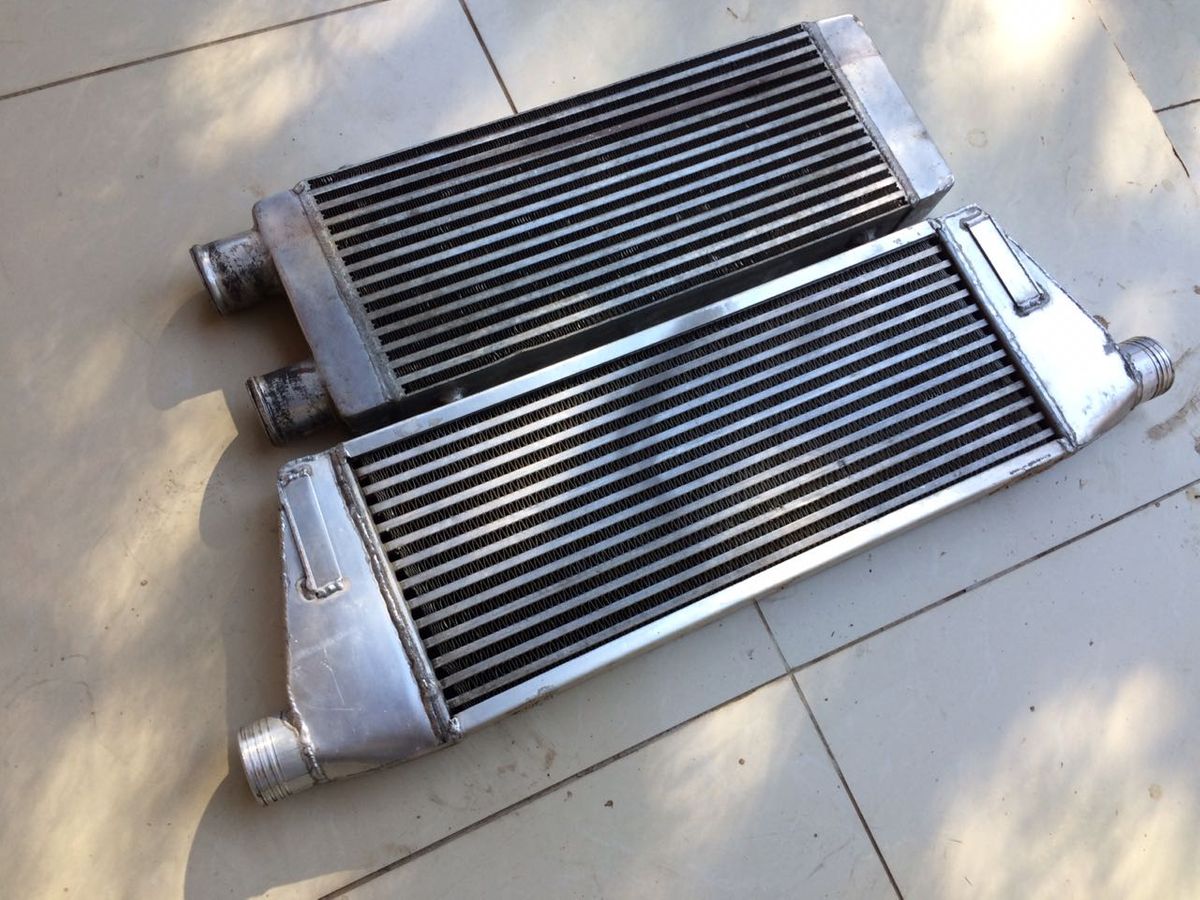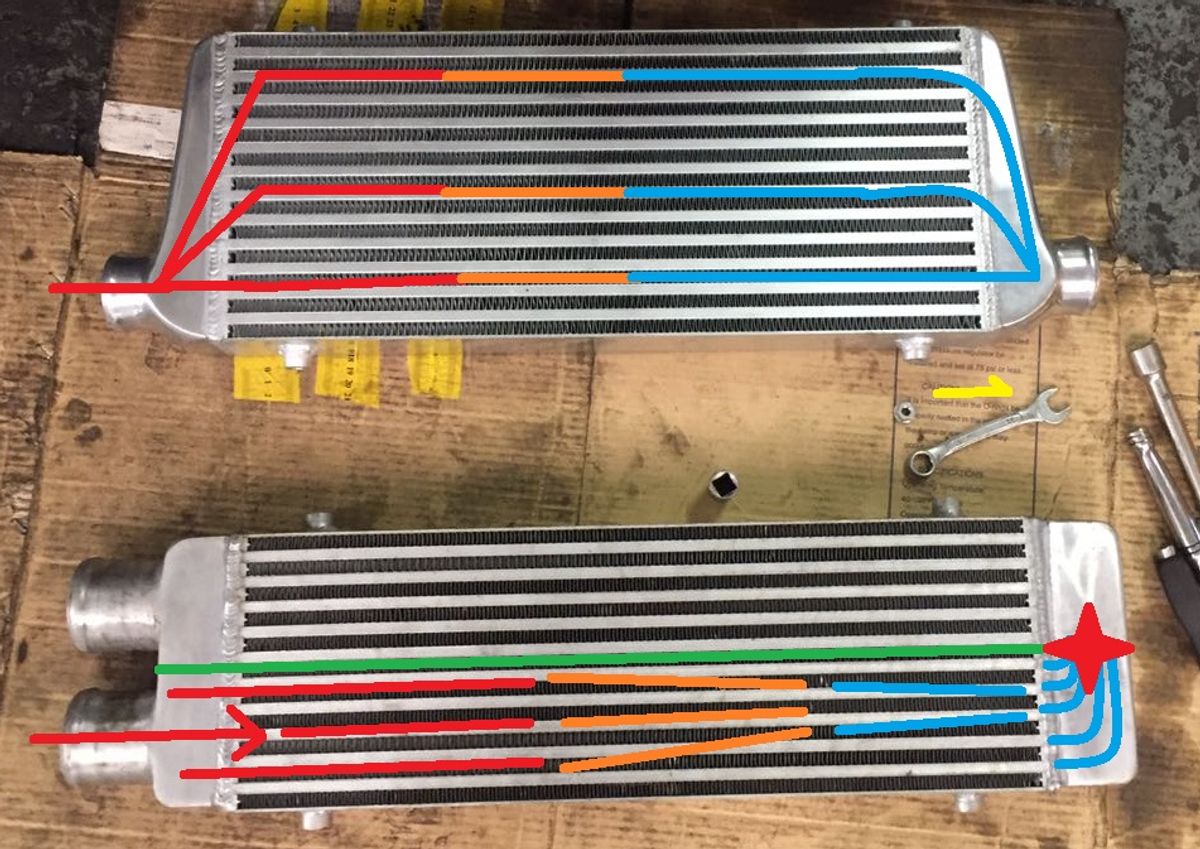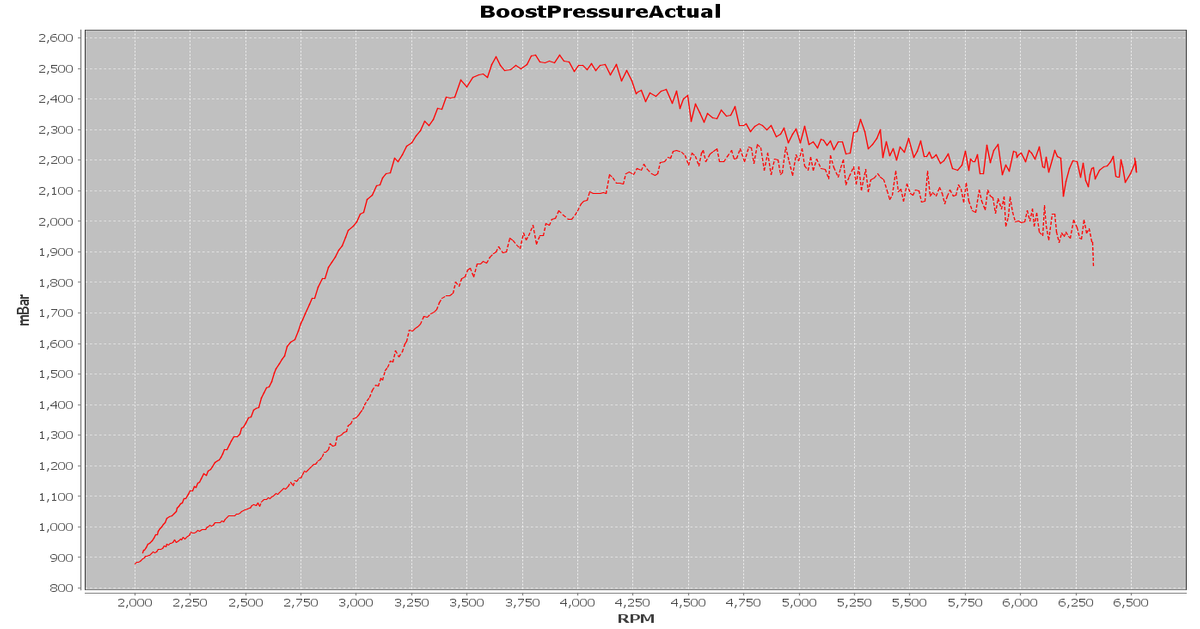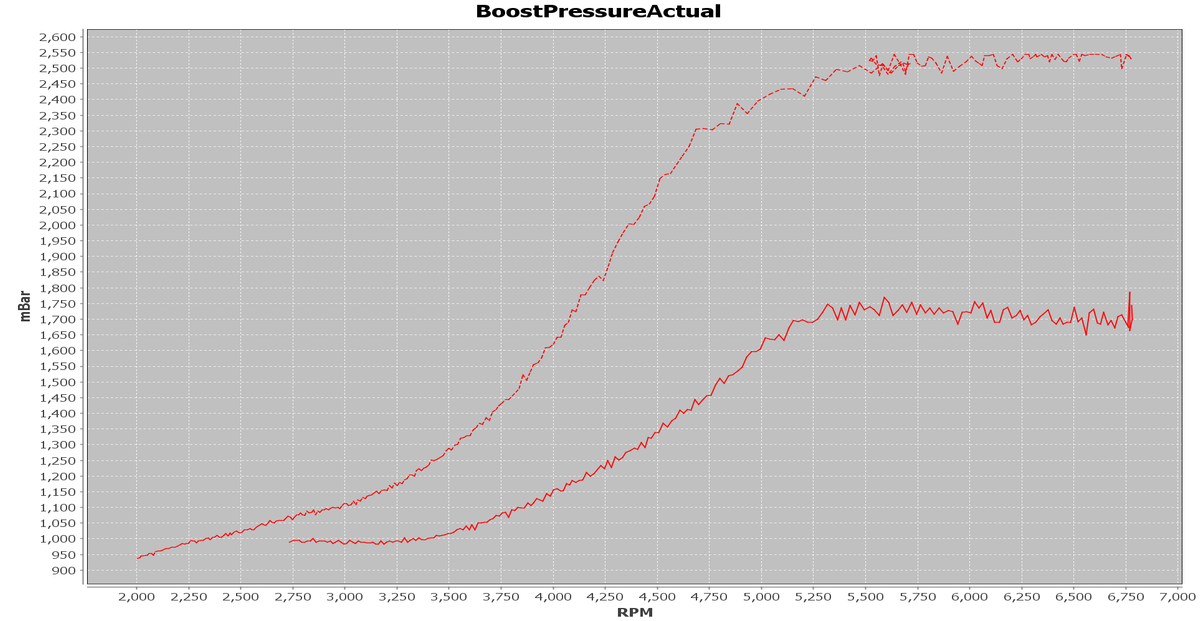Aah the age-old debate of intercooler shape/size/position, surely this is another blog post telling you why all intercoolers are the same and the most important choice is that you upgrade to any form of front-mounted intercooler.

This is PSA to avoid a specific type of U-flow intercooler. The dreaded, butt-ended/square-flow cheap cored intercooler, also known as the beijing anti-boost board. If you're wondering why we have such a deep dislike of a particular intercooler design, let me explain.
Turbocharged cars work on the principle of boost feeding itself, the despised 'turbo-lag' is simply the lag-time until the motor is able to produce enough exhaust gas velocity to drive the turbine, to pump enough air to produce enough exhaust gas to drive the turbine, to pump more air to produce more exhaust gas... etc. That process relies on the, mostly uninterrupted, airflow between the turbocharger compressor hotside (outlet) and the throttle body.
With the temperature of the charge/compressed air exiting the turbo compressor varying between 90 degrees C for low boost/high-efficiency setups and 200 degrees C on over stressed/high-boost/low-efficiency turbo setups. To avoid low-density, high temperature air from entering the intake manifold and creating unstable combustion in the cylinders, the use of some type of charge cooling is often implemented. The most common being the air-air intercooler. The hot air travelling inside the intercooler core transfers heat to the fins of the intercooler, which in turn transfers the heat to the ambient air passing over the intercooler. This drops the temperature drastically, on an average setup from around 150 degrees, to around 35 degrees.
An interpretation of Charles' law is applicable to this situation as follows:
Charles's Law states that temperature and volume are directly proportional, so as temperature goes up so does volume. The formula for density is mass/volume. So as volume goes up (with constant mass) density will lower. Therefore, as temperature goes up density goes down
The mass exiting the turbocharger is constant, however the charge density determines how much of that mass makes it into the cylinders on each stroke. Lowering the temperature, means more air enters the cylinders, and at a lower temperature, meaning more stable, powerful combustion. Wow, lovely info, but how is this applicable to the U-flow cooler bashing?
Well, let's have a look at the horrid thing, this is a photo taken by a client.

The intercooler at the top is the beast in question. It may look like an innocent intercooler, however let's take this to MS Paint and really get technical

In the above, highly-professional image, the division line between the upper and lower half of the U-flow trashcooler is delineated by the green line. The red flowlines indicate the high temperature flow entering the smash-cooler. The colour change shows that over the length of the cooler, the air begins to cool, and densify (the flow lines converging, also indicates this, in reality the flow is confined to the individual bars, of course).
The now denser air rams into the 90 degree end-tank and as all of the flow is now forced into an area 1/4 the depth of the cooler, a choke point is created (indicated by the MSpaint red 4-pointed star), causing immense restriction and pressure buildup on the lower half of the cooler. This restriction causes a pressure differential between the lower half of the cooler and the upper, it physically prevents air from reaching the motor. If air is not efficiently reaching the motor, the boost-feeds-upon-boost cycle is interrupted, and the pain of lag is upon us all. Sadness and bad feelings all round. In comparison, the cross-flow intercooler above it casually cools the air, with minimal pressure loss, great success and positivity.
In addition, the use of a short u-flow compounds the issue, as the effect is that of a cooler twice as long and half as high, like such:

The use of a cooler like this is as ridiculous as this MS Paint abomination. No sane person would think of strapping that to the front of their Mk4 GTi (red I, bro, it's an exec), but fold it in half and no problem at all (not).
This isn't all speculation, we have had at least 6 cars that have come to us sporting these boost killing contraptions, and all have exhibited the same problem, low power, exceptional lag, and an inability to build any kind of decent boost. Let's take it to the data-logs, Jimmy:

The above graph is of a Polo GTI 1.8T with a well-built K03S Hybrid, with satan's intercooler (dashed lines) and with a sane person's intercooler (solid lines). As can be seen, the spool difference is immense, with +- 1000 rpm difference in spool, peak to peak, and 300 mbar (0.3 bar) difference. It must be noted that in the log with the correct cooler, the boost was capped at 2500 mbar (1.5 bar), and purposefully tapered down, whereas with the reject cooler, the boost duty cycle was maxed out all the way, it was physically not able to make more boost than shown.
And again, a more extreme example:

Here the difference is much more extreme owing to the size of the turbocharger. The boost-feeding-boost cycle is far more sensitive on a larger turbo, and in this case, at wide-open-throttle, with the boost duty-cycle at maximum, it could not manage even 0.7 bar. With the correct cooler it had to be limited to 1.5 bar to stop it over-boosting.
In both of these examples, the only change made was the intercooler. The big turbo had a slightly larger U-flow, and exhibited exactly the same issue. In short, kids, think wisely before you strap one of these turbo-hating u-doesn't-flow intercoolers onto your pride and joy!
Thanks for reading and please sign-up/login with your thanas/facebook details and leave a like or comment/share if you enjoyed reading. You can also subscribe for notifications on your browser when new blog posts are uploaded.